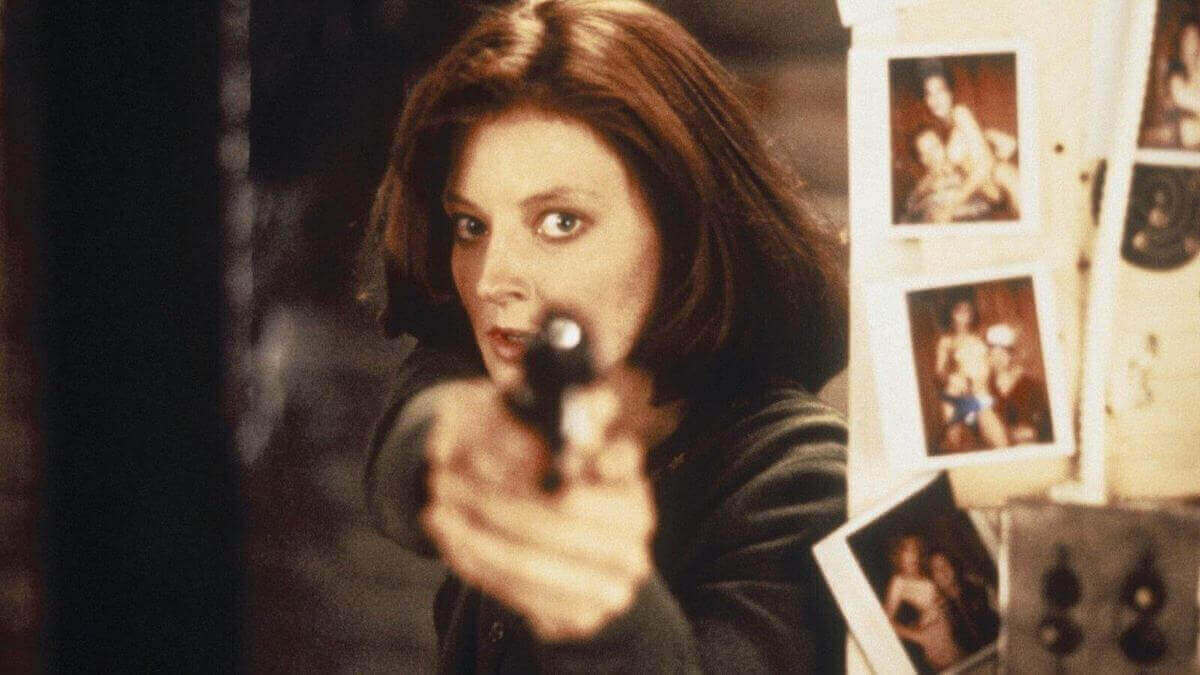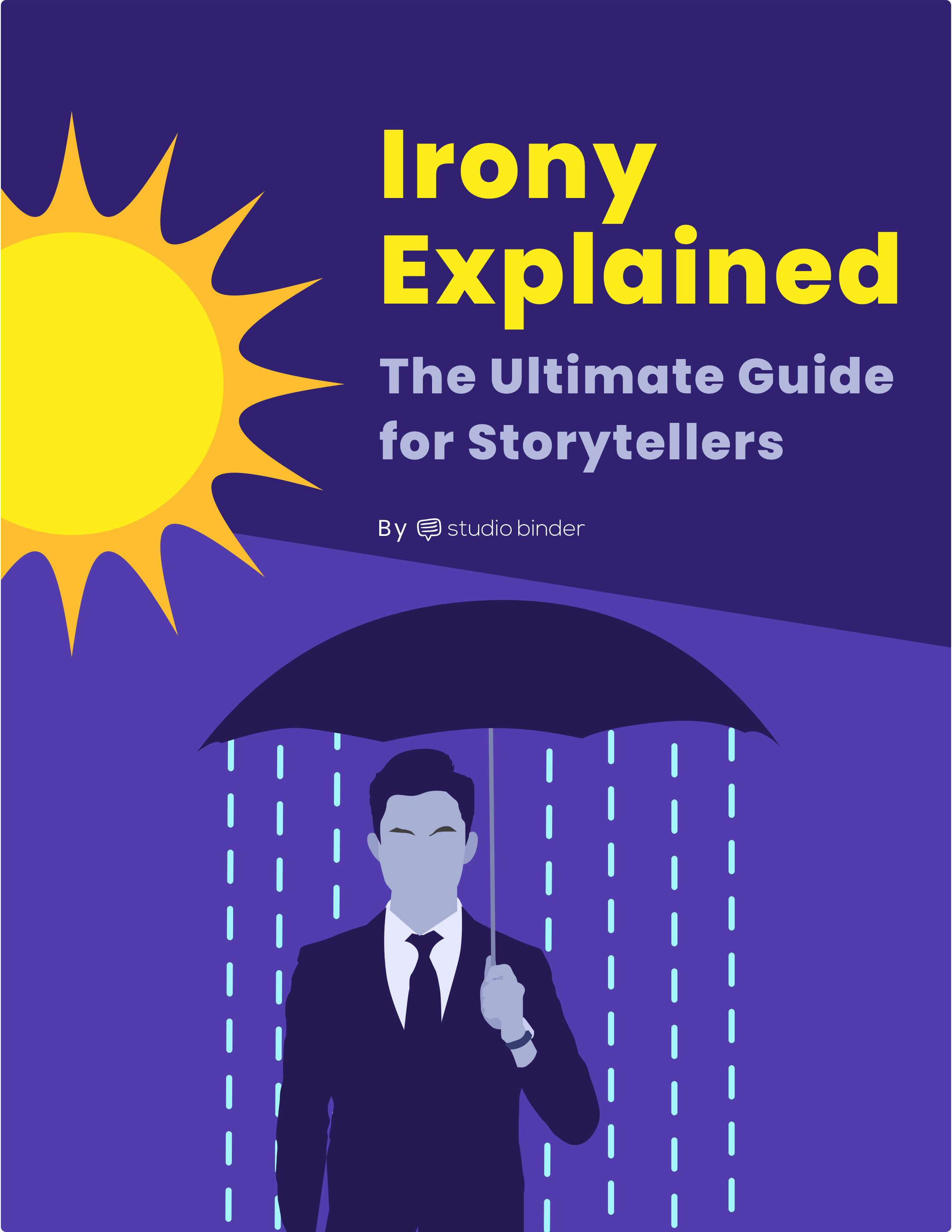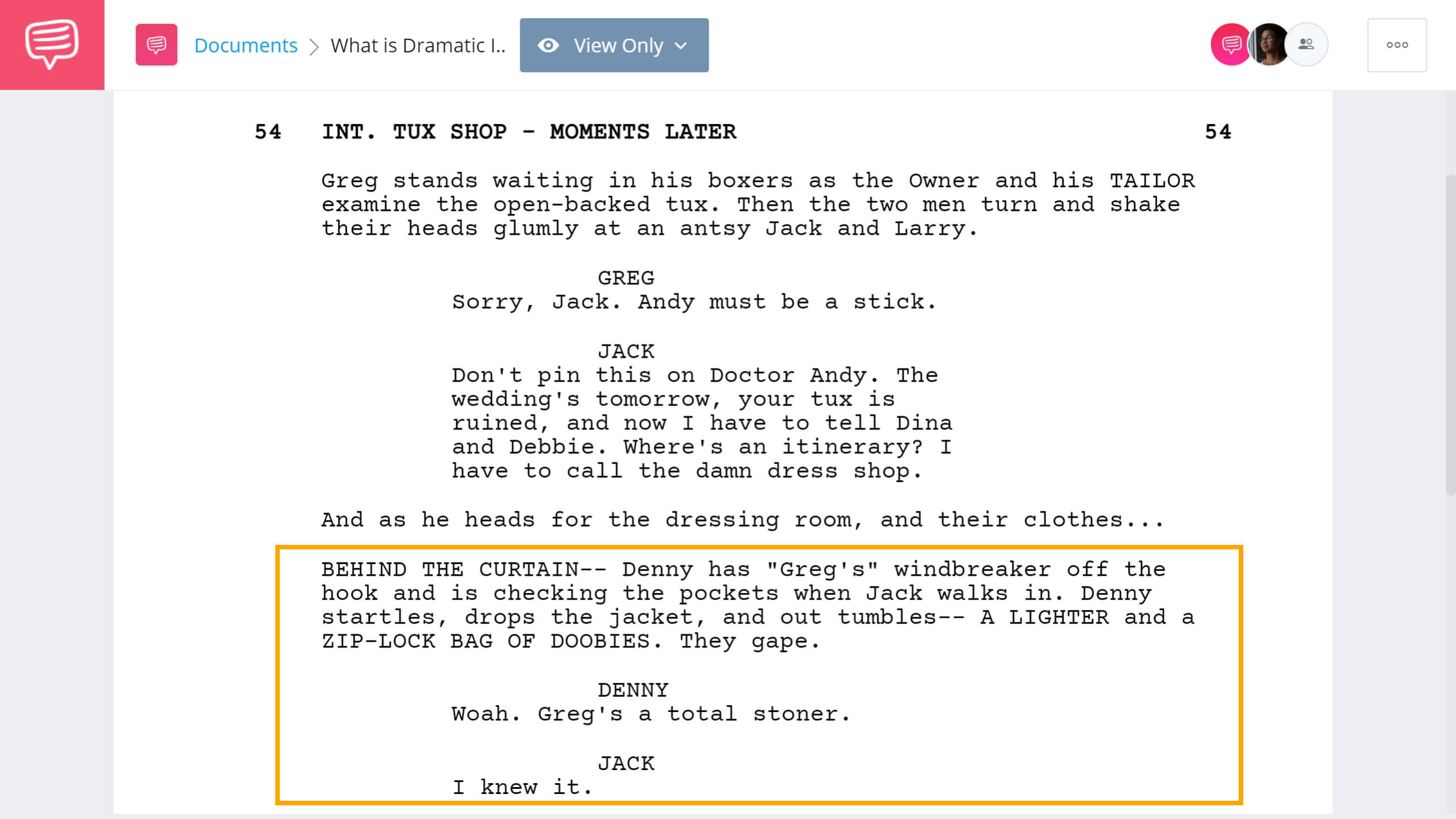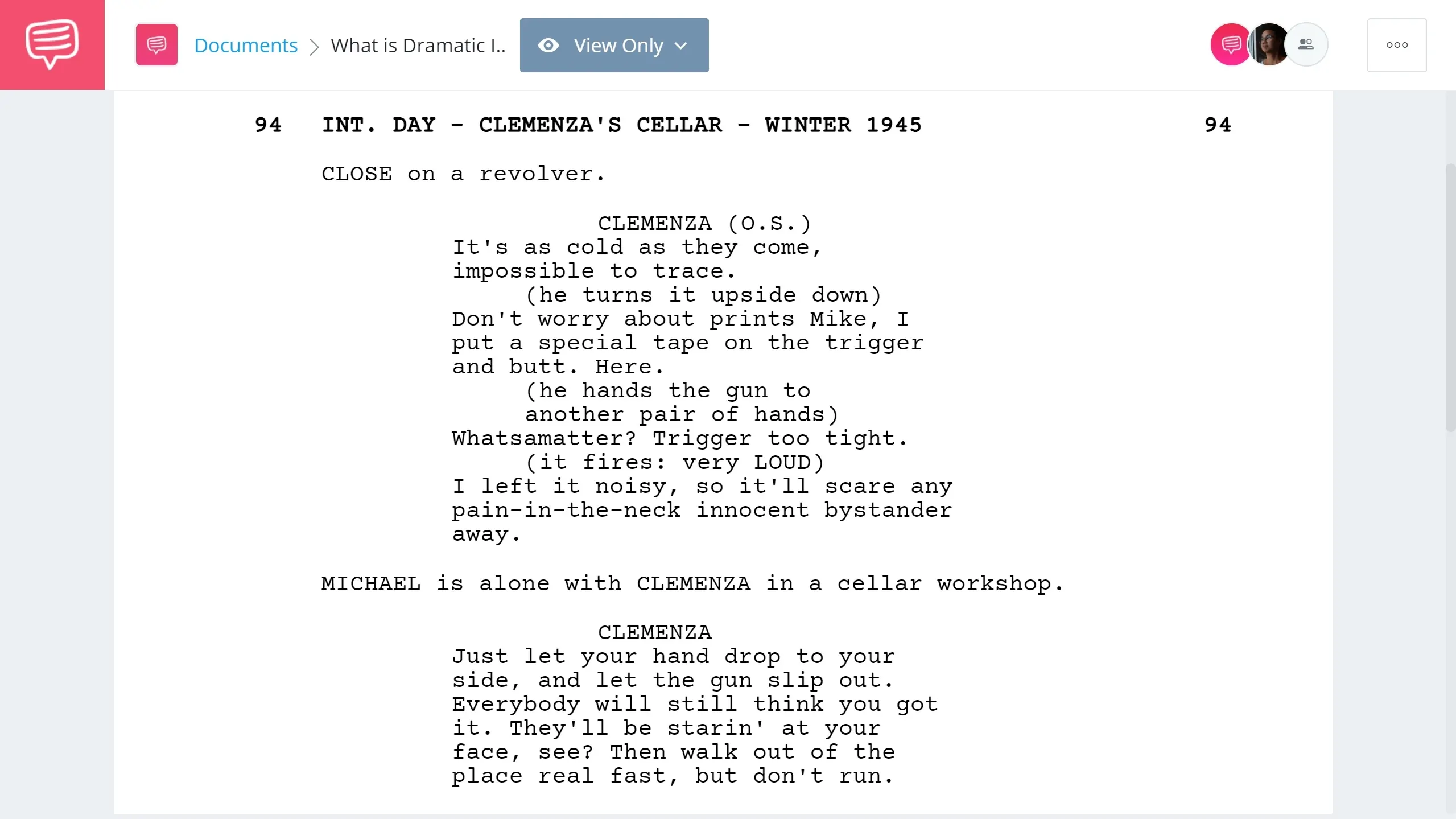Dramatic irony is one of the three main types of irony. Like verbal and situational irony, dramatic irony is an integral element of storytelling. The power a writer or director can yield with a firm grasp of dramatic irony is huge. But what is dramatic irony and how does it work?
In this article, we’re going to define dramatic irony. We will also discuss the stages of dramatic irony and a subtype called tragic irony. By the end, you’ll know how to implement dramatic irony in your own works.
Let’s Define Dramatic Irony Meaning
Introducing dramatic irony
Let’s begin with a quick definition of dramatic irony. Dramatic irony isn’t exactly a difficult concept to understand, but it is difficult to master. In simplest terms: dramatic irony is whenever we’re “in on the secret” of a story. Let’s listen to educator Christopher Warner explain dramatic irony in his own words.
What is Dramatic Irony? • Dramatic Irony Definition Explained
“Dramatic irony is when the audience seems to know more about an event, a situation, or a conversation than the characters do,” Warner said. Because of this, dramatic irony serves an integral role in engaging storytelling. We’re going to break down some dramatic irony examples in a bit, but first, let’s define dramatic irony.
Dramatic Irony Definition
What is dramatic irony?
Dramatic irony is when the audience understands more about a situation than some of the characters do. Oftentimes, this understanding leads to an element of suspense because we know the character(s) will learn the truth eventually – but we don't know when or how.
Dramatic irony can be deployed in many ways and in many genres. Comedy, horror, suspense, thrillers, and dramas can all benefit from the use of dramatic irony.
What are the stages of dramatic irony?
- Preparation
- Suspension
- Resolution
For a complete guide to irony, download our FREE ebook covering the types of irony, examples, and how writers wield it.
Free downloadable bonus
FREE Download
Ultimate Guide to Irony
Irony is an essential literary device that all writers should master. Download our FREE e-book to get in-depth explanations and examples on topics like the major types and sub-types of irony, and the myriad of ways writers can use it to enrich their storytelling.
What is Dramatic Irony Used For?
Conceptual dramatic irony examples
When the audience knows something the characters don’t, tension is created. We lean in closer and our engagement increases. Of course, for dramatic irony to really be effective, we need to build sympathy for the characters and establish stakes that the audience will care about.
Here are some simple examples of dramatic irony:
- Two characters kill their former classmate – then hide his body in a wooden chest and host a dinner party. We know the body is in the chest but the partygoers do not.
- The cabin in the woods is a staging ground for an ancient ritual. We know the cabin is part of an experiment, but the characters do not.
- The protagonist is secretly the star of a show. We know he’s on TV but he does not.
Now let’s look at how these instances of dramatic irony apply to famous movies:
- In Rope, Brandon and Phillip murder their former classmate David, then host a dinner party. We know David was strangled to death, but the partygoers – who largely consist of his family – do not.
- In The Cabin in the Woods, a group of scientists lure five archetypal teens to an abandoned cabin to stage an ancient ritual. We know the five teens are part of a ritual, but they do not.
- In The Truman Show, Truman Burbank is unknowingly the star of a 24/7 TV show. We know that Truman is under constant-watch, but he does not.
In all of these stories, the truth is revealed – but the tension that’s created by concealing the “secret” is what drives the story. Now that we’ve looked at some simple examples of dramatic irony, let’s break down the term in further detail.
Dramatic Irony Literary Definition
Dramatic irony examples in literature
Dramatic irony has played an important role in literature and stage plays for hundreds of years. Take William Shakespeare for example: many of his plays revolved around dramatic irony.
- In Twelfth Night, a love triangle is predicated on Viola’s false identity. We know she’s an imposter, but some characters do not.
- In Romeo and Juliet, the title characters commit suicide because they don’t know about each other’s plans.
- In Othello, the title character is led to believe his wife cheated on him – but we know she didn’t.
All of these instances of dramatic irony add nuance and drama to their story. Fyodor Dostoevsky’s Crime and Punishment is a book that revolves around dramatic irony. Take a look at this next video and think about how Dostoevsky plays with what dramatic irony – aka when we know more than some characters do – in order to create a sense of paranoia.
What is Dramatic Irony in Literature? • Crime and Punishment Explained
Dostoevsky was a master of using irony to create psychological terror. Our knowledge of the protagonist’s sinister crime makes us paranoid that he’s going to be caught. The book plays out like a game of cat and mouse between what we know and what they know. All in all, I’d say it’s an essential read for anyone looking to learn more about dramatic irony in literature.
What is Dramatic Irony’s Opposite?
The opposite of dramatic irony
Dramatic irony occurs when the audience knows more than the characters – but what is the opposite of dramatic irony?
When the character knows more than the audience.
An example might be Sherlock Holmes, who often withholds important information from the audience until the opportune moment. Let’s watch Sherlock showcase the opposite of dramatic irony in this next clip.
Opposite of Dramatic Irony • Sherlock lays it all out
Sherlock is a master at using deductive reasoning to make sense of situations; oftentimes before the audience is able to do so. Now that we have a better understanding of what dramatic irony is and how it works, let's go a little deeper into the subject.
One of the biggest questions involves the difference between dramatic and situational irony. In the next section, we’ll set the record straight.
What Does Dramatic Irony Mean Compared to Situational Irony?
Situational vs. dramatic irony
Dramatic and situational irony both involve circumstances and the difference between expectations and reality. The key difference between these two forms of irony is whether or not this unexpected reality is revealed to the audience along with the character or before.
With situational irony, our discovery that our expectations haven’t been met are aligned with the characters in the story.
With dramatic irony, we know well in advance that what the character expects is not the reality of the situation — and that creates tension.
Now that we have a firm understanding of this concept, let's look at some examples of dramatic irony. As we'll see, it is a very versatile and useful storytelling device — perfect for comedy, drama and suspense.
Comedy Effects of Dramatic Irony
Use dramatic irony for humor
The effects of dramatic irony can be seen in any story. Watching a character operate in circumstances where they don't know the entire truth can be dramatic or suspenseful. But it can also be funny.
Misunderstandings are the bread and butter of comedy, and dramatic irony is a fantastic way to generate misunderstanding.
Our first example is from one of the best 2000s movies, Meet the Parents. In this scene Jack (Robert De Niro) confronts Greg (Ben Stiller) about smoking marijuania. Of course, we know Jack’s been fed false information. We imported the Meet the Parents script into StudioBinder’s screenwriting software to take a closer look at this scene.
What is Dramatic Irony? • Meet the Parents Example
This moment of dramatic irony is played up for comedic effect better in the film. Check out the scene below.
What is Dramatic Irony? • Meet the Parents Clip
We see dramatic irony used elsewhere in comedy too. Three Amigos is built upon a premise that is a perfect example of dramatic irony. Steve Martin, Martin Short and Chevy Chase play Hollywood actors who assume they have been called down to Mexico to entertain the locals. Little do they know, the situation is real and the danger is right in front of them.
Dramatic Irony Examples • Three Amigos Clip
If you’re considering using dramatic irony for humor in your script, raise the stakes as high as possible. Just don’t punish the characters we’re rooting for too harshly or else the irony won’t work.
How to Use Dramatic Irony
Add dramatic irony for suspense
There is suspense inside every example of dramatic irony. We know the truth, and it's only a matter of time before the characters learn it too. Horror films and thrillers use this suspense all the time and to significant effect.
The Silence of the Lambs has an incredibly tense ending. Clarice is entirely vulnerable. We watch her fumble in the dark, unaware that Buffalo Bill is standing right in front of her, stalking her and in complete control of the situation. Check out the scene below.
Dramatic Irony Examples • The Silence of the Lambs Clip
Director Jonathan Demme puts us into a dramatically ironic vantage by showing us Clarice from Buffalo Bill’s point of view.
In our next example Michael Corleone kills two men at a restaurant. Let’s break down The Godfather script to see how Francis Ford Coppola and Mario Puzo used dramatic irony to add tension to this classic scene. Here, we are shown how Clemenza sets Michael up to kill Solozzo and McCluskey.
Dramatic Irony Examples • Laying the Groundwork in The Godfather
Now, we’re effectively “in on the secret.” We know Michael is going to kill Solozzo and McCluskey and we know how he’s going to do it. Sollozzo is (rightfully) suspicious of Michael and pats him down before he goes to the bathroom to retrieve the gun, but there is still a mountain of tension in the scene. Let’s see how that tension is released.
Dramatic Irony Examples • Execution in The Godfather
We really feel the effects of dramatic irony here because we know Michael had the gun planted. All in all, it’s a perfect example of how to use dramatic irony from laying the groundwork to execution.
We've reviewed some classic dramatic irony examples; now it's time to explore some variations. In the next section, we’ll list and define the various types of dramatic irony so you can see how intricate and nuanced this concept is.
Whats Dramatic Irony’s Subtype?
What is tragic irony?
Tragic irony is simply defined as dramatic irony with tragic consequences. It takes the same basic situation in which the audience knows more about the situation than the character. But in this type of dramatic irony, the character’s ignorance has dire repercussions.
Oftentimes, the audience will know about the tragedy in advance – sometimes even at the very beginning of the story. Then, we watch as they helplessly struggle to avoid it.
Dramatic Irony Subsets • Tragic irony defined
There is a lot more to explore with tragic irony, including more examples from movies and TV. Check out the article below to learn more about tragic irony.
Learn more about tragic irony →
What are the Stages of Dramatic Irony?
Stages of dramatic irony explained
Dramatic irony functions just like suspense: both take time and both need to result in the release of tension. The longer we let the tension boil, the greater the explosive reveal will be.
Deploying dramatic irony has a structure all its own. It is, in fact, very similar to a traditional three-act structure. The three stages include Preparation, Suspension, and Resolution.
If you want to learn more about the stages of dramatic irony, check out the article below in which we explain them with examples from movies and TV.
Learn more about the stages of dramatic irony →
UP NEXT
Dive deeper into irony
We've covered the basics of dramatic irony but there is so much more to learn. If there is a particular form of irony you want to explore further, just follow the navigation below. Each one of these subtypes of irony belongs in every writer's toolkit.
Easily create script breakdown sheets online.
Import scripts. Tag elements like props, wardrobe, and cast. Create breakdown summaries and DOOD reports in a snap.




Thanks for a great share. Can you share about mise en scene?